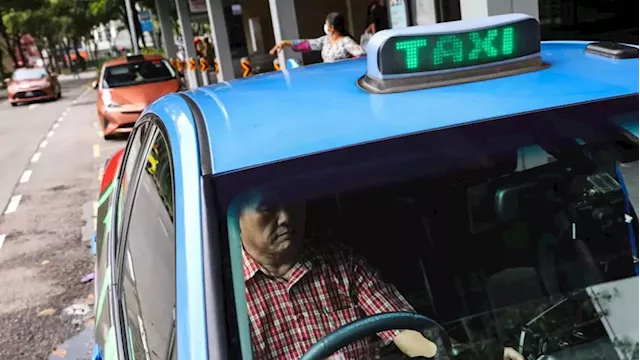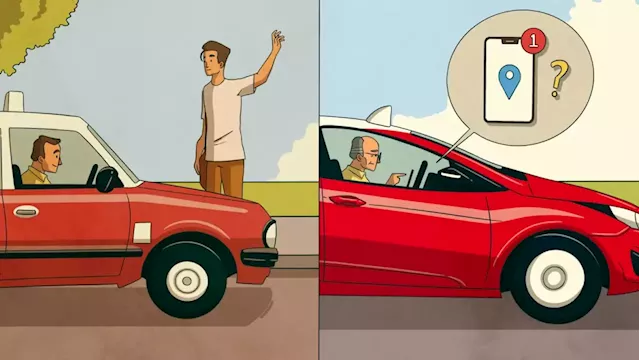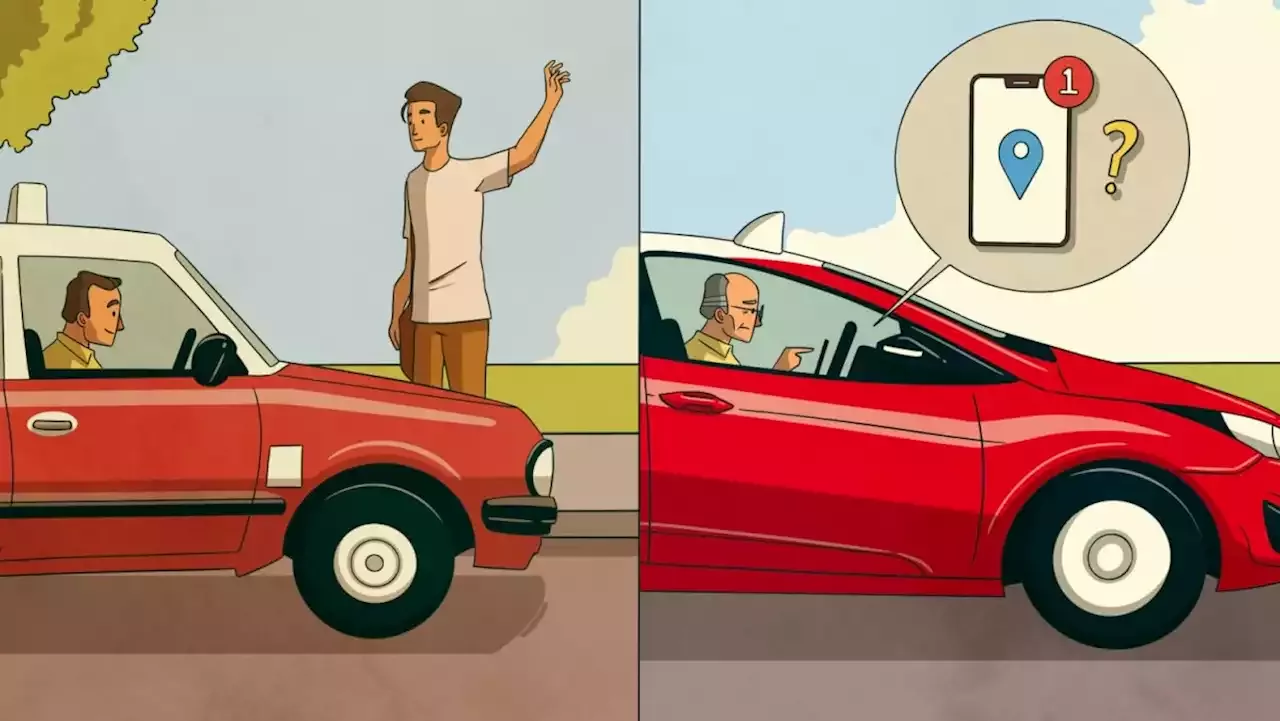The entrance of ride-hailing applications such as Uber and Grab back in 2013 and 2014 respectively was met with derision by many taxi drivers like Mr Oh, who felt they had lost business to the new entrants.
While he used to pick up only about seven passengers a day before using the application, he now picks up about 12 passengers a day. However, he is still paying the price: Due to increased competition from the other ride-hailing platforms, a drop in passenger demand amid the raging Covid-19 pandemic, as well as increasing fuel and rental costs, Mr Goh said that his recent take-home income is about 35 per cent less compared with pre-pandemic.
TODAY’s checks indicated that the number of drivers with a Taxi Driver's Vocational Licence above the age of 60 is relatively high. Statistics from 2019 show that about 34 per cent of those with a TDVL are 60 and above. While private-hire vehicles have taken on a larger share of the point-to-point market here, the total number of P2P vehicles — both taxis and private-hire vehicles — has been tumbling over the course of the pandemic.on private-hire rides, much to the dismay of commuters.
"It's a market service that meets a market transport need... As that need evolves, and as street hails continue to decline, then the market model needs to change," said Assoc Prof Theseira. He revealed that as of February 2019, the proportion of TDVL holders that were between 60 and 74 years old was 33.4 per cent, while those between 40 and 59 was 59 per cent.
Meanwhile, the number of active private hire car drivers dropped from 38,000 in November 2020 to 35,700 in June this year.In 2019, the number of private-hire vehicles reached its peak of 77,141, but then fell to 67,990 in 2021, about a 11 per cent decline. The number of street-hail trips, available only to taxis which can pick up customers who flag them, has fallen over the past one-and-a-half years.
However, some older taxi drivers told TODAY that it is harder for them to start using mobile applications as a way to get more customers, as they have been used to years of picking up passengers from flagdowns, a declining practice. While he could have signed up for these new apps, Mr Yeo said in Mandarin that he is already “very familiar” with the ComfortDelGro’s application, which he had only learnt to use just before the pandemic, and is thus not keen to learn using other apps.Though he could conceivably earn more by diversifying and using more applications, Mr Yeo said that he treats driving a taxi as a “retirement job” and does not mind the opportunity cost.
It was only when Covid-19 struck that he had a change of heart, after seeing his monthly income fall as low as S$1,000 at the height of the pandemic.65-year-old Tan Kerk Ing, a taxi driver for 32 years, decided to learn how to use ride-hailing applications as the pandemic raged, in a bid to improve their earnings.
Over the past month, whenever he calls for a taxi, said Mr Loy, they are frequently redirected to an automatic telephone message telling him that there are no taxis available. He added that when he is unable to get a taxi, he will either take a bus to his destination, or if he is running late, he will call his friend to book a private-hire car ride for him.An elderly commuter waiting at a taxi stand along Orchard Road on Aug 17, 2022. Older commuters have also been forced to play the waiting game as taxi numbers plummeted.The 70-year-old typically waits for a ride at taxi stands, as it is more convenient for him to board a taxi there, given his condition.
“The problem of course is the pandemic has disrupted many of these commuting patterns, and for substantial periods, eliminated a lot of the street-hail business since people used to prefer, for health reasons, to minimise time spent out of the home,” he said. "In recent times, high fuel prices have deterred prospective new drivers from joining the P2P sector," said Ms Tan.
Россия Последние новости, Россия Последние новости
Similar News:Вы также можете прочитать подобные новости, которые мы собрали из других источников новостей
 The Big Read: As the sun goes down on the taxi industry, some adapt while others risk being left behindSINGAPORE — Having been a taxi driver for 28 years, 63-year-old Anthony Oh was accustomed to the “traditional” means of picking up passengers — either by waiting at taxi stands, or by picking up riders hailing cabs on the street. One will always remember how they turned on the “Busy” signal to wait for an “On-call”, and how they magically disappeared before the midnight surcharges kicked in. To them, too bad so sad. The entrance of ride-hailing applications was met with derision by many taxi drivers who felt they had lost business to the new entrants.
The Big Read: As the sun goes down on the taxi industry, some adapt while others risk being left behindSINGAPORE — Having been a taxi driver for 28 years, 63-year-old Anthony Oh was accustomed to the “traditional” means of picking up passengers — either by waiting at taxi stands, or by picking up riders hailing cabs on the street. One will always remember how they turned on the “Busy” signal to wait for an “On-call”, and how they magically disappeared before the midnight surcharges kicked in. To them, too bad so sad. The entrance of ride-hailing applications was met with derision by many taxi drivers who felt they had lost business to the new entrants.
Источник: TODAYonline - 🏆 1. / 99 Прочитайте больше »
 The Big Read in short: What a rapidly shrinking taxi industry mean for older drivers, commutersSINGAPORE — Having been a taxi driver for 28 years, 63-year-old Anthony Oh was accustomed to the “traditional” means of picking up passengers — either by waiting at taxi stands, or by picking up riders hailing cabs on the street. 2 routes to highway from my place. A little longer straight to highway or shorter but lots of traffic lights and zebra crossings. My experience tells me taxi will choose multiple stopping route, private cars never fail to go longer with little stop. They have themselves to blame One will always remember how they turned on the “Busy” signal to wait for an “On-call”, and how they magically disappeared before the midnight surcharges kicked in. To them, too bad so sad.
The Big Read in short: What a rapidly shrinking taxi industry mean for older drivers, commutersSINGAPORE — Having been a taxi driver for 28 years, 63-year-old Anthony Oh was accustomed to the “traditional” means of picking up passengers — either by waiting at taxi stands, or by picking up riders hailing cabs on the street. 2 routes to highway from my place. A little longer straight to highway or shorter but lots of traffic lights and zebra crossings. My experience tells me taxi will choose multiple stopping route, private cars never fail to go longer with little stop. They have themselves to blame One will always remember how they turned on the “Busy” signal to wait for an “On-call”, and how they magically disappeared before the midnight surcharges kicked in. To them, too bad so sad.
Источник: TODAYonline - 🏆 1. / 99 Прочитайте больше »
